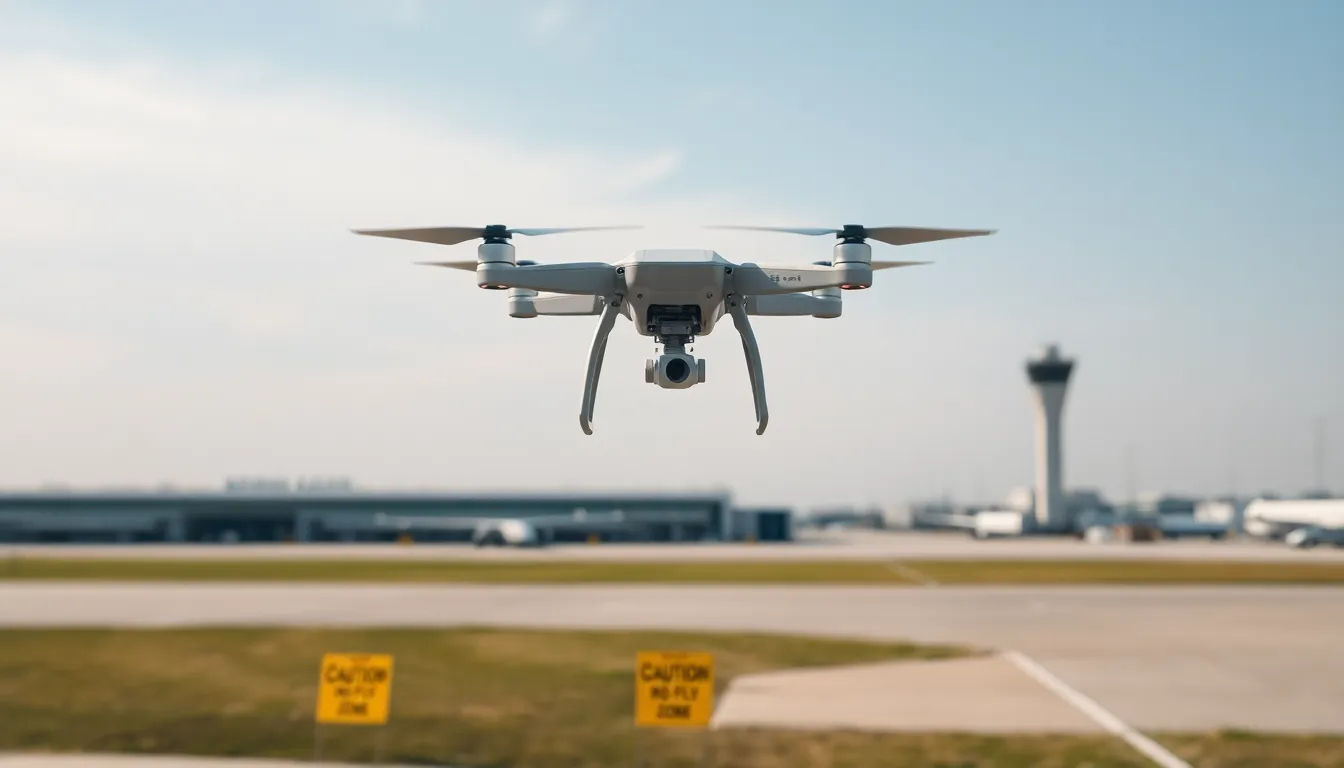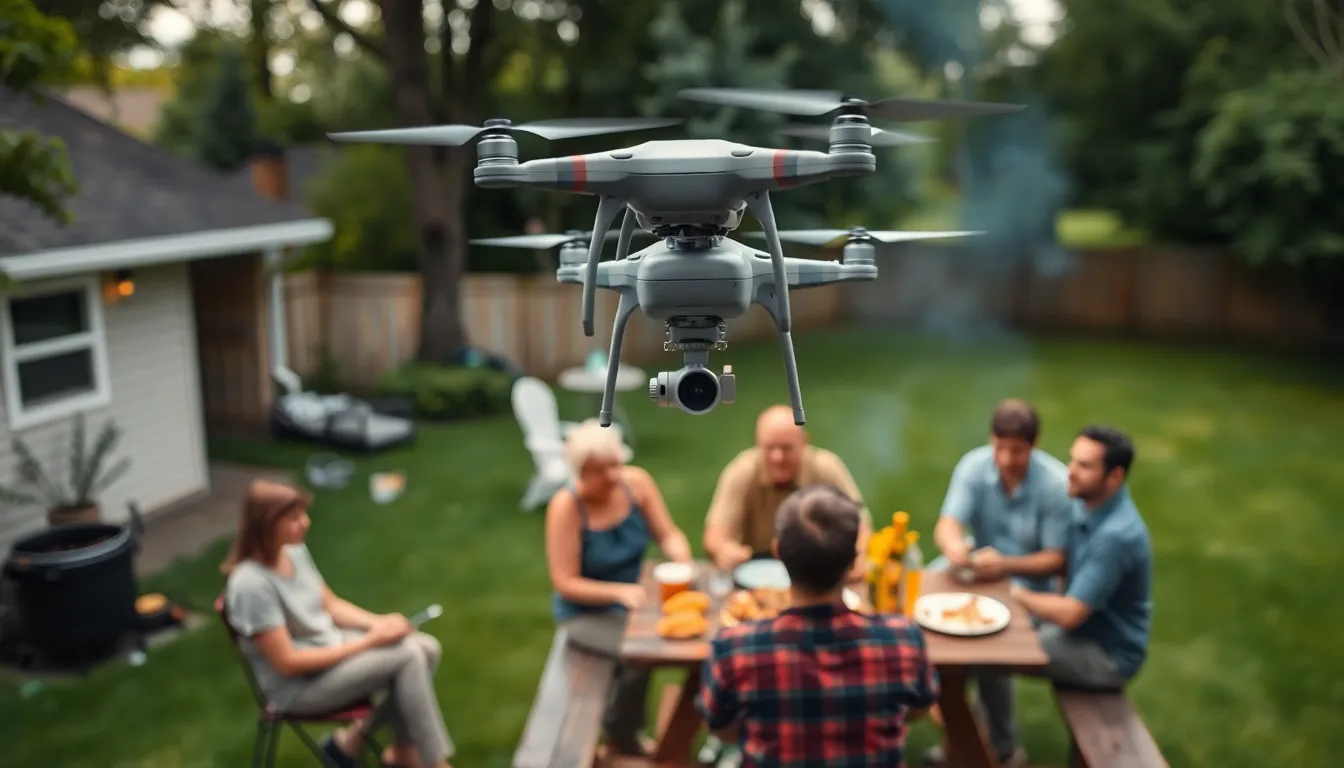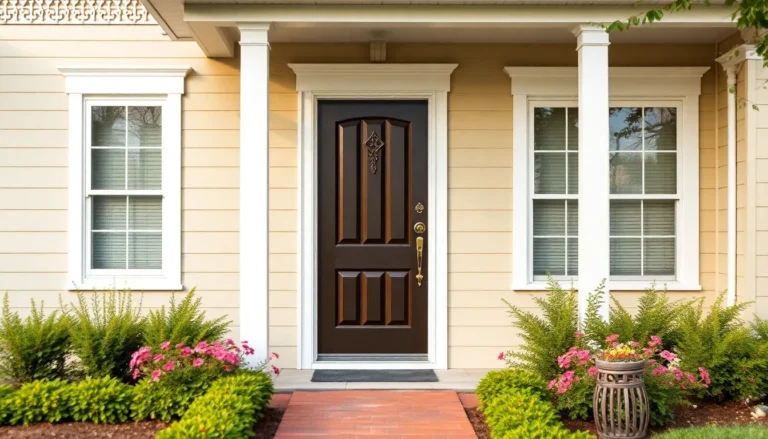In a world where drones zip through the sky like over-caffeinated bees, it’s essential to know where they can and can’t go. Imagine a drone soaring majestically over your backyard barbecue, only to be met with a swift “no-fly zone” slap from the authorities. It’s not just a buzzkill; it’s a safety measure that keeps the skies friendly and the ground drama-free.
Table of Contents
ToggleUnderstanding Drones With No Fly Zones
Drones operate under specific regulations that include no-fly zones, areas where their use is prohibited. These zones exist to ensure public safety and protect sensitive locations. Airports, military installations, and national parks typically represent common examples of such restricted areas.
Local authorities designate these no-fly zones based on various assessments. For example, areas near large gatherings or critical infrastructure often require additional airspace restrictions. Drones flying in these regions risk significant legal consequences, including fines or confiscation.
Awareness of no-fly zones is critical for drone operators. Participating in responsible flying practices prevents accidents and promotes compliance with regulations. Numerous apps and resources provide information on current no-fly zones, assisting operators in making informed decisions before flight.
Understanding the implications of violating a no-fly zone enriches the knowledge of drone users. Potential hazards arise when drones interfere with emergency services or infringe upon privacy concerns. Moreover, irresponsible drone operation can lead to public outcry and increased regulatory scrutiny.
Operators must respect and adhere to no-fly zones to foster a safe flying environment. The integration of drones into everyday life hinges on responsible use and respect for airspace regulations. Performing thorough research beforehand allows drone users to fly confidently and legally, minimizing risks associated with unauthorized airspace usage.
Importance of No Fly Zones for Drones

No-fly zones play a crucial role in ensuring safe drone operations. These regulations protect sensitive areas and help prevent accidents.
Safety Concerns
Accidents can occur when drones operate in no-fly zones. Dangerous situations arise near airports, where drone interference can jeopardize flights. Military installations also face potential threats from unauthorized drone activity. Crowded events create risks, as drones may crash, injuring bystanders. Maintaining airspace safety benefits everyone. Recognizing the dangers associated with flying in restricted areas keeps both operators and the public safer.
Regulatory Compliance
Compliance with no-fly zone regulations prevents legal repercussions. Violating these zones can result in steep fines or drone confiscation. Local authorities implement these restrictions based on public safety evaluations. Drones in restricted areas face increased scrutiny from law enforcement agencies. Staying informed about designated no-fly zones aids operators in adhering to laws. Awareness of these regulations contributes to responsible drone usage and fosters a compliant flying culture.
Types of No Fly Zones
Understanding the different types of no-fly zones helps drone operators navigate regulations effectively. Two primary categories exist: permanent and temporary no-fly zones.
Permanent No Fly Zones
Permanent no-fly zones remain in effect at all times. Airports serve as significant examples, with designated airspace extending around them to ensure safe takeoffs and landings. Military bases also classify as permanent zones due to national security concerns. National parks and wildlife reserves fall into this category as well, aiming to protect habitats and preserve natural environments. Failing to adhere to restrictions in these areas can lead to substantial fines or even legal action. Thus, familiarity with these zones is paramount for drone operators.
Temporary No Fly Zones
Temporary no-fly zones can emerge due to specific events or circumstances. Major public events, like concerts or sports games, often trigger temporary restrictions, preventing drones from entering the airspace during these times. Additionally, disaster response situations, such as wildfires or accidents, may impose temporary bans to facilitate safe operations for emergency services. Authorities typically notify the public about these zones through various channels, including apps or official websites. Compliance with these temporary restrictions remains critical for operator safety and legal adherence.
Technologies Affecting No Fly Zones
Technological advancements play a crucial role in managing no-fly zones for drones. Two key developments include geofencing solutions and detection and mitigation systems.
Geofencing Solutions
Geofencing solutions utilize GPS technology to establish virtual boundaries for drone operations. These systems automatically restrict drones from entering designated no-fly zones, such as airports or military installations. By implementing geofencing, manufacturers and software developers enhance the safety of airspace. Operators receive real-time alerts when approaching restricted areas, promoting responsible drone usage. Many drones come equipped with this technology, reducing the chances of accidental violations. Awareness of geofencing capabilities enables operators to fly safely and legally.
Detection and Mitigation Systems
Detection and mitigation systems focus on monitoring drone activity in no-fly zones. These advanced technologies can identify unauthorized drones and take appropriate action. Law enforcement and security agencies often deploy these systems around sensitive locations. Interventions may include jamming signals or employing drones to intercept violators. By investing in detection and mitigation, authorities strengthen airspace security. Improved communication between these systems and drone operators promotes compliance with regulations. Keeping up with these technological advancements is essential for ensuring safety in restricted airspace.
Understanding no-fly zones is crucial for anyone operating a drone. By recognizing where these restrictions apply drone users can fly safely and legally while avoiding potential legal repercussions. Awareness of both permanent and temporary no-fly zones helps maintain safety in the airspace and protects sensitive locations.
Technological advancements like geofencing and detection systems enhance compliance and safety, ensuring that operators are alerted in real-time about restricted areas. As the drone industry continues to grow, staying informed and adhering to regulations will foster a culture of responsible flying. Ultimately, respecting no-fly zones not only benefits individual operators but also contributes to the overall safety of the community.



